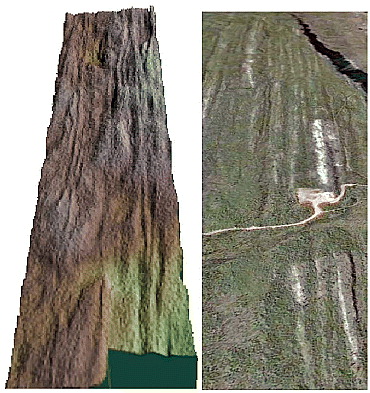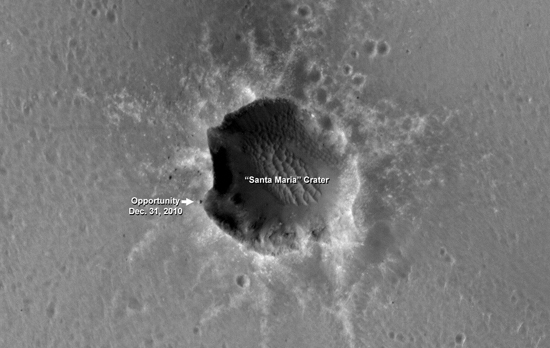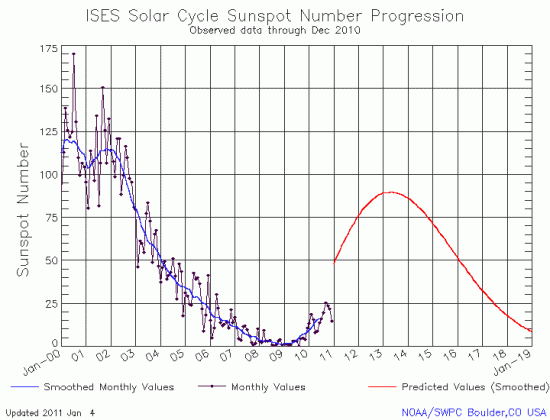The touchdown that shook the Earth
The touchdown that shook the Earth.
The touchdown that shook the Earth.
The touchdown that shook the Earth.
From the second press conference at the AAS meeting today, results from the Sloan Digital Sky Survey, which has been surveying the sky in incredible detail over the past eleven years:
All this data will be available for anyone to dig around in.
From the first press conference at the AAS meeting today, focused on recent discoveries from the European space telescope Planck:
The Krakatau volcano in Indonesia has become active, forcing the evacuation of tens of thousands residents.
More from the AAS meeting: The Fermi Gamma-Ray Space Telescope has detected beams of antimatter produced above Earth’s thunderstorms. Key quote:
Scientists think the antimatter particles were formed in a terrestrial gamma-ray flash, a brief burst produced inside thunderstorms and shown to be associated with lightning. It is estimated that about 500 such flashes occur daily worldwide, but most go undetected. . . . The spacecraft was located immediately above a thunderstorm for most of the observed terrestrial gamma-ray flashes. But, in four cases, storms were far from Fermi. In addition, lightning-generated radio signals detected by a global monitoring network indicated the only lightning at the time was hundreds or more miles away. During one flash, which occurred on Dec. 14, 2009, Fermi was located over Egypt. But the active storm was in Zambia, some 4,500 kilometers (2,800 miles) to the south.
Preliminary findings from the USGS National Wildlife Health Center suggest that the mass bird die-off that occurred in Arkansas was from impact trauma. Key quote:
The State concluded that such trauma was probably a result of the birds being startled by loud noises on the night of Dec. 31, arousing them and causing them to fly into objects such as houses or trees. Scientists at the USGS NWHC performed necropsies—the animal version of an autopsy—on the birds and found internal hemorrhaging, while the pesticide tests they conducted were negative. Results from further laboratory tests are expected to be completed in 2-3 weeks.
Hanny’s Voorwerp: a strange object near a galaxy that has baffled astronomers is now seen as a light echo from when the galaxy’s central quasar was still active. More importantly, this is evidence that the quasar went quiescent sometime in the last 70,000 to 200,000 years. For a quasar to turn off so quickly is a surprise for astronomers.
Bumped. Scroll down for updates!
From the abstract of Geoffrey Marcy’s talk today at 6:30 pm (Eastern) at this week’s meeting in Seattle of the American Astronomical Society:
The NASA Kepler Mission has discovered over 700 candidate planets, with most having diameters less than 5 times that of Earth and some as small as that of Earth. One planet has a radius, mass, and density in a new domain having no counterpart in our Solar System, opening a new chapter in planetary science. [emphasis mine]
A press conference is scheduled for 11 am (Eastern). Stay tuned!
Update I. A NASA press release just made public says that Kepler has discovered a rocky planet only 1.4 times the size of the Earth.
Kepler 10b [is] a rocky planet with a mass 4.6 times that of Earth and with an average density of 8.8 grams per cubic centimeter — similar to that of an iron dumbbell.
The press conference is ongoing, but the Kepler results are still to come.
Update II. The star the planet orbits, Kepler 10, is similar to our Sun in mass and size, but older, about 8 billion years old, and is 560 light years away. Kepler 10 is also a relatively bright star in the Kepler field of view, about 11 magnitude.
The planet’s orbit itself is only 8.4 days long. Its density, 8.8 grams per cubic centimeter, is 8.8 times greater than Earth’s. This data, based on all planet models, also suggests that the planet should be a rocky planet like the Earth, though heavier and larger with a surface gravity twice that of Earth.
Since the planet orbits so close to its sun, it is a scorched world, very hot. The scientists expect that it has no atmosphere. It is also probably tidally locked, with one side always facing its Sun.
Update III: Geoffrey Marcy, one of the world’s premier exoplanet scientists, is now commenting on these Kepler results, saying he considers this discovery “among the most profound discoveries in human history.”
Update IV: In answer to a press question, the scientists speculated that the planet might have formed as a gas giant farther from the star, then migrated inward and had its gas atmosphere stripped away. No one knows yet if this is true however.
Studies of further transits might learn more about the planet, such as the temperatures between its two hemispheres. As the planet orbits the star and its illuminated side comes into view, they can see the change in temperature and thus track it. Right now they think the sunlight side could be as hot as 2500 degrees Fahrenheit.
If you want to watch the press conference for yourself, they will be posting the video here.
The shooting in Tucson might cause NASA to drop Congresswoman Giffords’ husband as commander of Endeavour’s last mission this spring.
Russian scientists are about to drill into Lake Vostok, a lake buried for the last 14 million years beneath the almost two and a half mile thick Antarctic icecap.
The next time someone begins ranting about how the money from “big oil” is used to attack the science of global warming, tell them to take a look at this post, which outlines in detail the more than $2 billion that the U.S. government plans to spend on climate change research in 2011 alone (too much of which is unfortunately used by partisans like James Hansen to try to prove the Earth is warming).
In a paper published today in Geophysical Research Letters of the American Geophysical Union, scientists describe how they have been able to produce remarkably detailed images of the ground buried almost a mile under the ice sheet of Greenland. These radar techniques are the same used in the past by spacecraft to image the hidden surface of Venus, only far more sophisticated.

This image from the paper compares the radar image of the Greenland surface (on the left) to an photograph of a known surface feature in the Northwest Territories of Canada, produced thousands of years ago by the giant icesheets of the last Ice Age. Both are at the same scale, about a third of a mile across, and are looking at the surface at an oblique angle of about 45 degrees. With the radar-produced image on the left, sunlight is simulated as coming from the right, with the elevation increasing as the colors go from green (lowest) to yellow to brown to purple (highest).
The long grooves, generally 30 to 100 feet deep and extending sometimes several miles, are produced as the icesheet slides across the ground. In the radar image, however, these grooves are slowly being ground out now.
It is the resolution of this technique that is so exciting. That they can look through ice almost a mile thick and resolve objects that are only tens of feet across tells me that someday it will be possible for spacecraft to map the smallest features on the surface of Venus or Titan. More exciting, this suggests that the technology will one day exist to even map the unknown surface of gas giants like Jupiter or Saturn, and do it in breathtaking detail.
Yowza!
From Watts Up With That: Data from the Argos ocean floats says that the Earth’s climate, as measured by the heat content of the ocean, has been cooling since 2001, not warming as predicted by climate models. You can download the actual science paper, “The Energy Balance of Earth,” here.
It ain’t just NASA that’s having budget problems: The lack of a budget from Congress is going to delay the launch of two civilian NOAA weather satellites by more than a year.
Why the sun’s atmosphere is hotter than its surface.
A proposal to revive a project to send a private science probe to an asteroid.
The original project, NEAP, was proposed back in 1997 by the late Jim Bensen of SpaceDev (now Sierra Nevada). Benson wanted to not only do research, but he planned to claim the asteroid as his property upon landing. Though his proposal never flew, it was clearly a forerunner to today’s resurgence of the private space industry, and in many ways kickstarted that resurgence.
The early Lunar Orbiter images, taken in the mid-1960s, have been reprocessed and recovered, in a spectacular manner.
Using old Apollo data, scientists have detected the Moon’s molten core.
Another whitewash? The University of Virginia is resisting releasing a variety of climate documents being requested under the state’s Freedom of Information Act (FOIA). Key quote:
In response to a previous FOIA request, U.Va. denied these records existed. However, during Cuccinelli’s pre-investigation under the Virginia Fraud Against Taxpayers Act (“FATA”), a 2007 law passed unanimously by Virginia’s legislature, which clearly covers the work of taxpayer-funded academics, U.Va. stunningly dropped this stance.
Back in 1998 a peer-reviewed paper in the medical journal, Lancet, claimed that the childhood vaccinations for measles, mumps and rubella vaccine could be linked to autism and other health problems. The consequence was that thousands of parents withheld vaccinations from their children, resulting in an outburst of measles that almost certainly did actual harm to many children.
This paper has now been shown to be an outright fraud.
This story raises two thoughts. First, it demonstrates clearly that just because a research paper is published in a “peer-reviewed” science journal is no guarantee that the paper will be honest, reliable, or factually accurate. As good scientists like to say, “Extraordinary results require extraordinary evidence.” Both the press and public need to be constantly skeptical about all research, regardless of where it is published.
Secondly, the reaction of the journal, Lancet, to this whole affair suggests strongly that this particular journal is even more unreliable than most. To quote:
The Lancet withdrew the article in January of last year after concluding that “several elements” of the paper were incorrect. But the journal didn’t describe any of the discrepancies as fraud.
The journal’s reaction is similar to what we saw with the climategate emails, an effort to whitewash the situation while refusing to face the problem bluntly and fix it. If the article was as fraudulent as the Wall Street Journal article above suggests, it raises serious questions about the editorial policies at Lancet. That the editors there seem uninterested in addressing these concerns acts to discredit their publication entirely. And until they deal with this issue properly, I would look very skeptically on anything they publish.
(Note that this is not the first time Lancet has published research of questionable reliability. See this story for another example.)
Science discovers the obvious: Cats are manipulative!
Don’t plan that honeymoon yet! Long-term space flight may be a problem for human reproduction. Key quote:
If exercise keeps muscles in shape [in space], what countermeasure might astronauts use to maintain reproductive health?
Souza laughed.
“That’s a good question,” he said.
An amateur astronomer, using his computers at home, has discovered four new exoplanets.
Japan may try to put Akatsuki into orbit around Venus five years from now, rather than six.
Andromeda’s once and future stars. Great images of the galaxy too!
You can’t make this stuff up! A vulture, tagged by Israeli scientists to study the bird’s migration patterns, flew into Saudi Arabia where it was arrested as a spy.
The image below was taken by Mars Reconnaissance Orbiter on New Year’s Eve. It shows the rover Opportunity on the rim of stadium-sized Santa Maria Crater, where scientists plan to spend the next two months exploring the crater.
Opportunity has truly been an astonishing success for NASA’s planetary science program. The rover has operated on the Martian surface since 2004, almost seven years beyond its original mission length. It is presently about halfway on its long journey to the much larger Endeavour Crater (14 miles in diameter), still several miles away.

The monthly update of the Sun’s developing sunspot cycle was published tonight by NOAA’s Space Weather Prediction Center. You can see the newest graph below, which shows the slow rise in sunspots (blue/black lines) in comparison with the consensis prediction made by the solar science community in May 2009 (red line).
Not only does the Sun’s generally quiet trend continue, its activity took an additional plunge in December, dropping significantly from the previous month. This drop is probably due to the seven days of no sunspots that took place in mid-December.
All in all, we continue to head for the weakest maximum in two hundred years (see the graph on this page), which in the past meant very cold weather. Though scientists do not yet understand why the Sun does this or how these changes in solar activity influence the climate as much as they do, that this in now happening at a time when we have the technology to truly study it is an opportunity that must not be missed.
